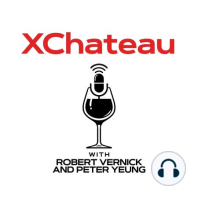35 min listen

Fanning the Flames, Understanding Smoke Taint w/ Dr. Anita Oberholster
Fanning the Flames, Understanding Smoke Taint w/ Dr. Anita Oberholster
ratings:
Length:
51 minutes
Released:
Dec 9, 2020
Format:
Podcast episode
Description
With four years of extreme fire season in Northern California, the study and importance of smoke taint is at all-time highs. Leading the charge is Dr. Anita Oberholster of UC Davis, who is collaborating globally to better understand the chemistry of smoke exposure and taint, how to measure it, what to do about it, and how to create new solutions to monitor and manage it. This episode packs everything you’d ever want to know about smoke taint in 50 minutes! Detailed Show Notes: Dr. Oberholster is an Extension Specialist in Oenology at UC Davis, which means she interacts more with industry than teaches, lots of applied researchFrom South Africa, she studied Biochemistry and has a Ph.D. in Wine Chemistry from South AustraliaDefinitions: Smoke taint - overpowers the wine, makes it one dimensional, and reduces the qualitySmoke exposure - can have different levels of exposure, no index yet exists to track, but academics are collaborating on itSmoke exposure is less about proximity, but how fast the smoke gets to you => very fresh, dense smoke = higher risk of smoke taintVolatile phenols decay in the atmosphere, if it’s more than 24 hours old, there’s less riskThe ultimate goal - have a low-cost sense that detects volatile phenols to determine the smoke riskVineyards are most susceptible when there are berries on the vineThere’s no carryover effect from prior year firesTesting grapes vs. wine - wine tests are more accurate because there are more free volatile phenols vs. bound with sugars~20-25% of people aren’t sensitive to smoke taintTesting is expensive and laborious, requires a gas chromatography, mass spectrometerCrop insurance - covers grower if smoke exposure is above a certain level; it’s heavily subsidized by the governmentThere’s no correlation between thin and thick-skinned grapes and smoke taintAlcohol (if >10%), sugar (if >3g/L), and phenolic compounds mask smoke character, and green character enhances the smoke characterRose - gets ~30% of the volatile phenols vs. red wine but may still show taint relative to the lower concentration of compoundsCarbonic maceration - one of the worst for smoke taintSprays to prevent taint - results very variable so farWhen there’s wetness/oiliness on berries, then to absorb more smoke taintWashing fruit - unclear if this has any impactMost wineries will not take the brand risk to release smoke tainted wineBest practices for growers and wineries: Buy crop insurance for growersContracts between growers and winery need to be as clear as possible, with a cutoff for smoke taint Get access to library episodes Hosted on Acast. See acast.com/privacy for more information.
Released:
Dec 9, 2020
Format:
Podcast episode
Titles in the series (100)
Covid-19 Impacts: Interview with Lauren McPhate, Tribeca Wine Merchants: In this episode host Robert Vernick and co-host Peter Yeung interview Lauren McPhate. Lauren is Director of Sales at Tribeca Wine Merchants in downtown Manhattan. Her experience with wine began in Hong Kong where she worked as Communication and Events Man by XChateau Wine Podcast